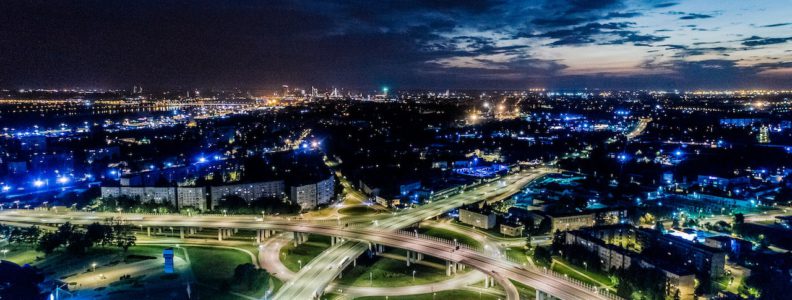Construction zones are ubiquitous in our urban and suburban landscapes, signs of progress and development. These projects promise improved infrastructure, roads, and more efficient transportation networks. However, they also bring temporary disruptions, traffic congestion, and safety concerns for commuters and construction workers. The management of traffic within construction zones is a critical aspect of ensuring not only the safety of all involved but also the smooth flow of traffic and the mitigation of delays and inconveniences. This article will delve into the complex world of construction zone traffic management, examining the challenges it presents and the strategies and innovations that can streamline traffic flow while enhancing safety.

The Challenges of Construction Zone Traffic Management
1. Safety Concerns: Safety is among the foremost concerns in any construction zone. Heavy equipment, loose debris, and rapidly changing road conditions can create hazardous environments for workers and passing motorists. Ensuring the safety of everyone in and around the construction zone is paramount. An essential component of safety measures is implementing a traffic management permit system designed to mitigate risks associated with heavy equipment.
2. Congestion and Delays: Reduced lane capacity and detours often result in traffic congestion and delays. These delays can have far-reaching economic and environmental consequences, affecting not only commuters but also businesses and the overall efficiency of transportation networks.
3. Driver Behaviour: Drivers in construction zones may exhibit unpredictable behaviours, such as speeding, tailgating, or distracted driving. Managing and mitigating these behaviours is essential for the safety of everyone on the road.
4. Communication: Effective communication with drivers is critical. Informing them about upcoming construction zones, lane closures, detours, and expected delays helps ensure their safety and allows them to plan their routes accordingly.
Effective Strategies for Construction Zone Traffic Management
1. Advance Planning and Communication:
Effective traffic management in Melbourne begins long before construction starts. Public awareness campaigns launched through various channels, such as social media, local news outlets, and roadside signs, inform drivers about upcoming projects, expected delays, and alternative routes. These campaigns are crucial for managing expectations and encouraging drivers to plan their trips accordingly.
2. Work Zone Design:
The design of the construction zone layout plays a pivotal role in traffic management. Efficient layout planning can minimize the impact on traffic flow. Temporary lanes, crossovers, and ramp closures should be strategically employed to maintain traffic capacity and reduce disruptions. Clear and visible signage is essential within the construction zone. Warning signs, speed limits, and lane closures must be marked to guide drivers safely through the construction area.
3. Traffic Control Personnel:
Trained flaggers and workers are critical for managing traffic at critical points within the construction zone. They ensure smooth traffic flow and create safe passages for workers who may need to cross lanes or perform tasks near active traffic. Flaggers play a crucial role in directing vehicles and ensuring everyone’s safety.
4. Traffic Monitoring and Data Collection:
Real-time monitoring and data collection are essential to manage traffic in a construction zone effectively. Traffic cameras placed strategically throughout the site provide constant surveillance, allowing traffic management teams to make quick decisions based on current traffic conditions. Data analytics tools help identify traffic bottlenecks and areas that require improvement. Predictive analytics can forecast traffic flow and congestion, enabling proactive measures to alleviate traffic issues before they escalate.
5. Technology and Innovation:
Technology is rapidly transforming construction zone traffic management. One innovation is connected work zones, which utilize sensors and data-sharing platforms to provide real-time information to drivers and traffic management teams. Connected work zones enhance communication and coordination. Automated flagging systems are another innovation that reduces the need for manual flaggers in certain situations. These systems improve safety by minimizing the exposure of workers to live traffic while maintaining efficient traffic flow.
6. Construction Scheduling:
Scheduling construction work during off-peak hours whenever possible is an effective strategy for minimizing disruptions during high-traffic periods. This approach, known as nighttime or weekend construction, helps reduce the impact on daily commuters and businesses. Accelerated construction techniques are also gaining popularity. These methods, such as prefabrication and modular construction, allow for shorter project durations and reduced traffic impacts. By completing construction projects more quickly, these techniques help alleviate congestion and inconvenience for drivers.
7. Community Engagement:
Collaboration with local communities, businesses, and government agencies is vital for effective traffic management in construction zones. Engaging with stakeholders helps devise strategies that minimize disruptions and accommodate local needs. Establishing feedback mechanisms for drivers and nearby residents is equally important. This allows individuals to report concerns, suggest improvements, and provide valuable insights to enhance traffic management strategies.
8. Enforcement and Education:
Law enforcement agencies are crucial in ensuring compliance with traffic regulations within construction zones. Strict enforcement of speed limits, lane closures, and other rules helps deter unsafe driving behaviours and maintains safety. Educating drivers about safe conduct in construction zones is equally essential. Public service announcements, driver education programs, and informational campaigns can raise awareness and encourage responsible driving.
9. Environmental Considerations:
Construction zone traffic management should also consider environmental impacts. Implementing sustainable construction practices, such as reducing emissions from construction equipment and managing stormwater runoff, helps minimize the ecological footprint of construction projects. Additionally, sustainable practices can enhance nearby residents’ overall quality of life.
Effective traffic management within construction zones is a complex and multifaceted challenge. It requires careful planning, coordination, and the adoption of innovative strategies and technologies. Construction projects can minimise disruptions, enhance safety, and streamline traffic flow by implementing advanced planning and communication, efficient work zone design, technology and innovation, and a commitment to safety, sustainability, and community engagement. Ultimately, successful traffic management contributes to the overall success of construction projects, benefiting both commuters and the communities they serve.

